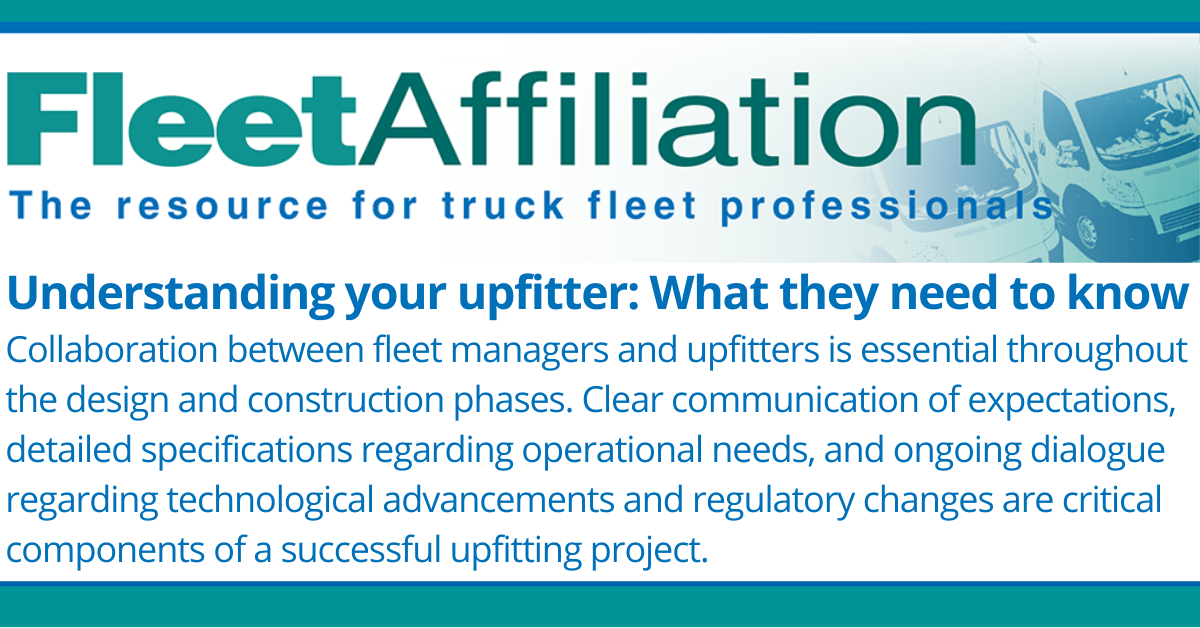
Published in June 2024 Fleet Affiliation.
Comparing today’s vocational vehicles to similar models from just 10 years ago reveals a staggering advancement in technology. Innovations now touch every surface of the commercial vehicle industry, extending far beyond the expected realm of technology, safety and regulation. In the past decade, we have witnessed significant progress in weight control, reduction of rolling resistance and aerodynamic drag, enhanced corrosion resistance, improved manufacturing processes, vehicle and equipment safety, increased productivity, and many other areas.
When we combine all these advances with the ongoing incorporation of electronics and complex regulations, fleet professionals responsible for designing such vehicles may face significant challenges due to the complex nature of upfitting. Because purpose-built vehicles are built in multiple stages with different manufacturers, upfitters require a high level of detailed information related to the intended purpose of these vehicles.
Vehicle application is key to a systematic approach
Every fleet has unique needs. To leverage your upfitter expertise effectively, start by identifying the goals and objectives of the desired unit. This requires at least your upfitter's understanding of the vehicle’s applications, drive cycles and vehicle life cycles. With this knowledge, they can pinpoint the technologies that offer the greatest potential return and introduce these innovations to your fleet.
The right chassis and technology
Collaboration between fleet managers and upfitters is essential throughout the design and construction phases. Clear communication of expectations, detailed specifications regarding operational needs, and ongoing dialogue regarding technological advancements and regulatory changes are critical components of a successful upfitting project.
Choosing the right chassis is crucial but understanding the nuanced differences between chassis manufacturers is equally vital. While many fleets have preferred chassis suppliers, the specific features offered by each manufacturer can significantly impact an upfitter's ability to deliver a final product that meets all requirements. Upfitters bring valuable experience working with diverse chassis makes and models, enabling them to navigate potential challenges related to component integration, spatial constraints, and the relocation of original manufacturer components that may conflict with the upfitting process.
While many fleets tend to standardize on chassis manufacturers, it's crucial to grasp the features offered by each manufacturer and how these can influence the final product's upfitting. Collaborating closely with upfitters is key, as they bring extensive experience across different chassis makes and models. They have the knowledge and can navigate available features and understand specific chassis complexities that may complicate the upfitting process. Factors such as the addition of specific components, their placement, and potential conflicts with original manufacturer placements are all considerations that can impact the successful integration of upfits.
Relationships are key
In the end, it’s important to establish relationships and maintain them. Your upfitters can be an extension of your business, and become a partner, rather than just a supplier. Leverage their knowledge and expertise, and make sure they know they are valued.
Find additional information and resources for work truck fleets at ntea.com/fleetresources.